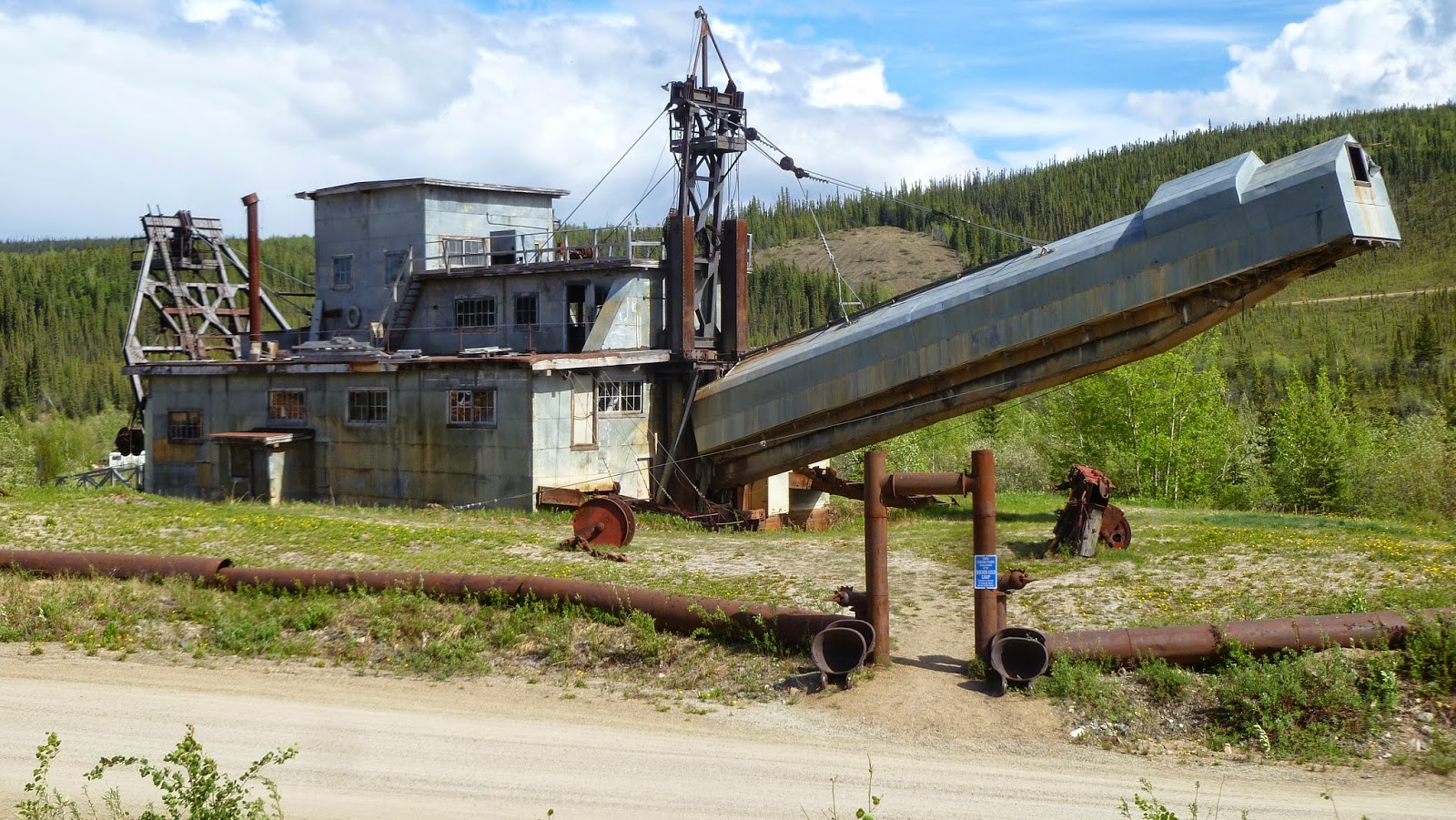 We drove the 21 miles to the end of the paved section on the west.
We drove the 21 miles to the end of the paved section on the west.
The end of the paved section came at a narrow wooden bridge that crossed the Tangle River just before our campground entrance.
 There were no hookups in this campground, so we were self-sufficient for the two nights that we stayed there. The Delta River and Tangle Lakes surrounded the campground, so it was a favorite spot for fishermen.
There were no hookups in this campground, so we were self-sufficient for the two nights that we stayed there. The Delta River and Tangle Lakes surrounded the campground, so it was a favorite spot for fishermen.
There was a trail up to the top of the ridge overlooking the campground. That evening, we hiked up there in hopes of finding some wildlife, but no luck. We did have a nice view though.
I came prepared for anything. You just never know.
 We could see our campground from the top of the ridge. Click on the photo to see our red truck and white trailer on the right toward the back. The river was right behind us.
We could see our campground from the top of the ridge. Click on the photo to see our red truck and white trailer on the right toward the back. The river was right behind us. The next day we decided to take a bike ride to explore a portion of the unpaved section of the Denali Highway. As we rode along, a bald eagle flew overhead. It looks flat here, but we're actually climbing. The good news is that it was downhill coming back!
The next day we decided to take a bike ride to explore a portion of the unpaved section of the Denali Highway. As we rode along, a bald eagle flew overhead. It looks flat here, but we're actually climbing. The good news is that it was downhill coming back!
We stopped for a selfie at a pretty spot along the way.
After about 5 miles, we started heading back. On the way, we stopped to talk to a couple who were camping in a pull-off along the side of the road. Turns out they were planning to come to our campground that day, so we got to spend more time with them later on.
We were wondering where all the wildlife was, but then right after we started riding again, we saw a caribou crossing the road just ahead of us.
The Tangle River runs into the Tangle Lake. There were a couple of sightings of a moose with two calves along the river. I got up early to try to spot them but had no luck. Shortly after I left the area, they showed up. The German family that we had met in Valdez were here at the campground too. One of their daughters came to my trailer to tell me the moose were there, but by the time I got back to the spot, they had wandered into the woods. Darn! I'm still in search of baby moose.
It's always fun to watch the birds. There were a few that I hadn't seen before and some that are common all over. Here are the ones I saw around the campground.
The Tangle River runs into the Tangle Lake. There were a couple of sightings of a moose with two calves along the river. I got up early to try to spot them but had no luck. Shortly after I left the area, they showed up. The German family that we had met in Valdez were here at the campground too. One of their daughters came to my trailer to tell me the moose were there, but by the time I got back to the spot, they had wandered into the woods. Darn! I'm still in search of baby moose.
 |
| Warbler |
It's always fun to watch the birds. There were a few that I hadn't seen before and some that are common all over. Here are the ones I saw around the campground.
 |
| White-crowned Sparrow |
 |
| Herring Gull |

There are so many different wildflowers around the state. Here's a sample of the ones I saw around the Denali Highway. I haven't identified all of them yet.
 |
| Anemone narcissiflora |
 |
| Arctic Lupine |
We left Tangle Lakes in the same direction that we came, not wanting to take the trailer across the unpaved portion of the highway. It was a clearer day, and the views of the mountains were, of course, spectacular. The Alaska Range seemed to be everywhere.
We headed up toward Fairbanks and stopped in Chena Lake State Recreation Area for a couple of days before arriving in Fairbanks. More on that in the next post.













































